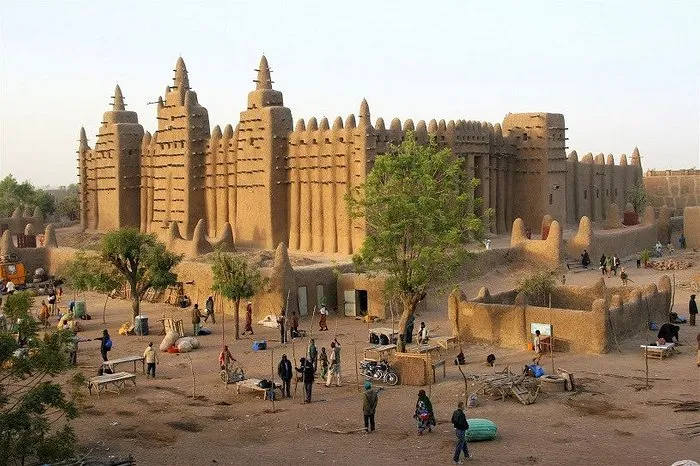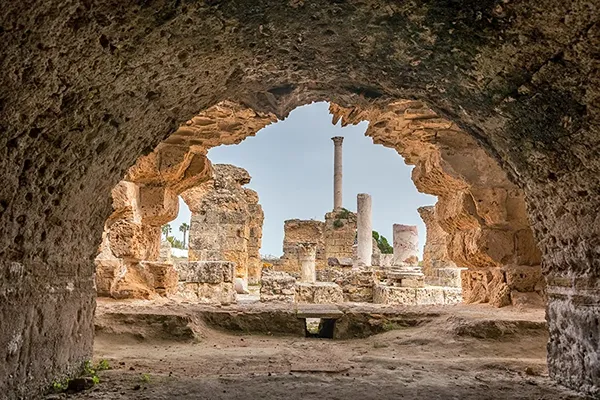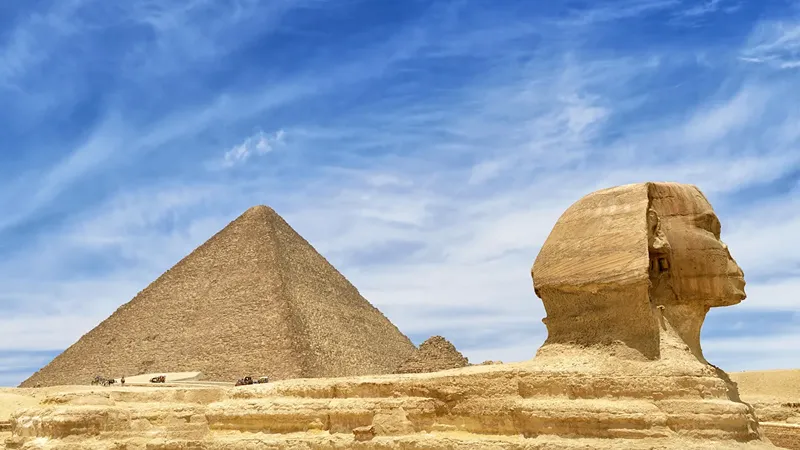Africa’s history goes back thousands of years. The continent is home to some of the earliest human civilizations like the ancient Egyptian Empire, the Carthaginians in North Africa, and the Aksumite Empire in East Africa.
From around the 9th to 16th centuries, trans-Saharan trade routes occurred across North and West Africa until the late 15th century when European powers, including Portugal, Spain, Britain, France, Belgium, and Germany, established colonial rule in various parts of Africa.
Decades have passed and though these civilizations have ended, we are left with sites to tell their stories as well as the thoughts that occupied their minds.
Here are some of Africa’s top historic sites:
Chinguetti, Mauritania
Chinguetti, which means “place of the books,” is a ksar (walled city) and a medieval trading center in northern Mauritania, located on the Adrar Plateau east of Atar.
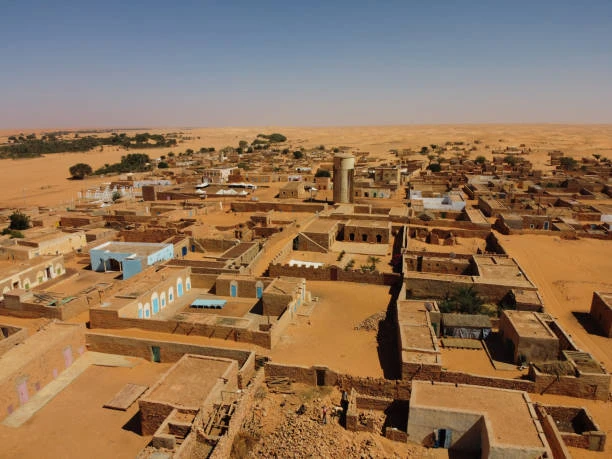
The city is one of the four ancient Saharan cities of Mauritania, along with Ouadane, Tichitt, and Oualata, which were designated UNESCO World Heritage Sites in 1996. It is often referred to as the “City of Libraries,” and is an important center of learning and trade along ancient Saharan caravan routes.
It was founded in the 13th century and contains over 7,000 manuscripts, some of which date back to the 11th century. Surrounded by a desert landscape, the city is known for its camel caravans. Its architecture features mudbrick buildings, topped with distinctive ostrich egg finials.
The most notable building in Chinguetti is the Friday Mosque, built in the 15th century.
Lamu Old Town, Kenya
Lamu Old Town is a UNESCO World Heritage Site located on Lamu Island, Kenya. It is the oldest and best-preserved Swahili settlement in East Africa and dates back to the 14th century.
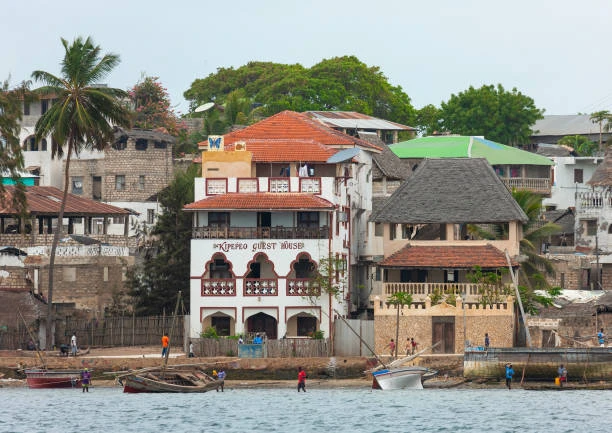
Its narrow streets make it impossible to drive a car. Hence people get around by foot, bicycle, or donkey. Its traditional Swahili architecture features whitewashed houses, built with coral stone and mangrove timber and coral-stone mosques.
Important religious and cultural sites include the Lamu Fort, the Riyadha Mosque, and the Takwa Ruins.
Tomb of Askia, Mali
The Tomb of Askia is a 17-meter-high pyramidal tomb located in the city of Gao, Mali. According to historians, it is the burial place of Askia Mohammad I, the fifth ruler of the Songhai Empire, and was built in 1495, after Askia Mohammad’s pilgrimage to Mecca.
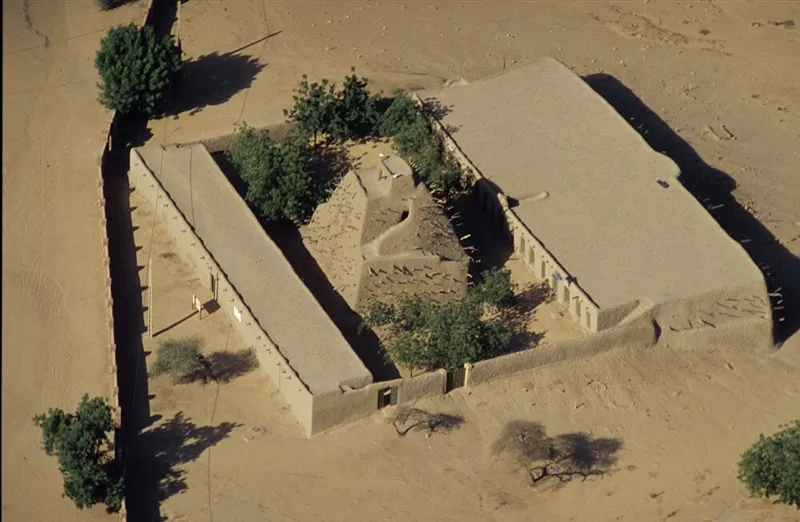
The tomb is made of mudbrick and is topped with a conical roof. It is decorated with geometric motifs and Koranic inscriptions, reflecting the Sudano-Sahelian architecture.
It is a reminder of the power and wealth of the Songhai Empire, which was one of the largest and most powerful empires in West Africa, controlling the trans-Saharan trade in gold and salt.
Sadly, it has been damaged by war and neglect. In 2012, it was placed on the List of World Heritage in Danger due to the threat of damage from the ongoing conflict in Mali. However, UNESCO and the Malian government are working to restore the tomb and protect it for future generations.
Tiya Stones, Ethiopia
The Tiya stones are an archaeological site located in the Soddo woreda area of Ethiopia. It consists of large stone pillars engraved with some form of decoration. It was designated a World Heritage Site in 1980, due to the uniqueness of the monolithic monuments.
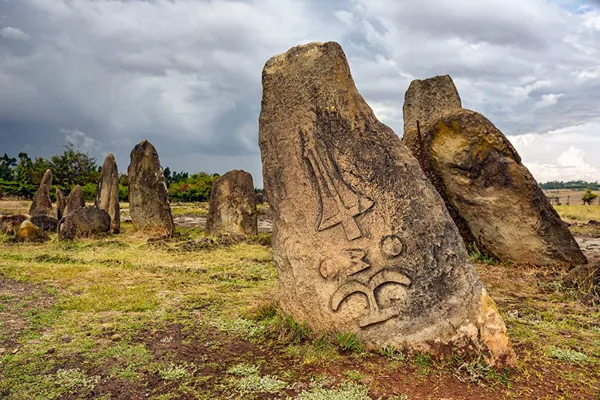
The site contains over 40 stelae, of which 36 are decorated. The stelae are made of sandstone and range in height from 1 to 5 meters. The engravings include human figures, animals, weapons, and geometric shapes.
Djenne, Mali
Djenné is a town located in the Inland Niger Delta region of central Mali. It is known most notably for the Great Mosque of Djenné, considered by many architects as the greatest achievement of the Sudano-Sahelian architectural style. It is the largest existing mudbrick or adobe building in the world.
Djenné is located in the Inland Niger Delta region of central Mali. It is known for its mudbrick architecture, most notably the Great Mosque of Djenné, considered by many architects to be the greatest achievement of the Sudano-Sahelian architectural style. It is the largest mudbrick or adobe building in the world.
Robben Island, South Africa
Its rock-cut tombs spanned almost 500 years from the 18th to the 20th Dynasty. It is a wadi, or dry riverbed, that is about 3 km long and 1 km wide.
The tombs are decorated with scenes from Egyptian mythology and religious texts. They also contain the remains of the pharaohs and their possessions.
The most famous tomb in the Valley of the Kings is KV62, the tomb of Tutankhamun, a young pharaoh who died unexpectedly in the 14th century BC. His tomb was discovered in 1922 by Howard Carter and was found to be virtually intact. The tomb contained a vast treasure of gold and other artifacts, making it one of the most important archaeological discoveries of the 20th century.
Other notable tombs in the Valley of the Kings include those of Seti I, Ramses II, and Nefertiti.
The Valley of the Kings is a UNESCO World Heritage Site. It is also one of the most popular tourist destinations in Egypt.
The Island of Gorée, Senegal
Gorée Island is a small island off the coast of Dakar, Senegal. It is known for its role in the 15th- to 19th-century Atlantic slave trade. The island is now a UNESCO World Heritage Site.
The island was a major center for the transatlantic slave trade. The House of Slaves, a museum on the island, serves as a stark reminder of the horrors of the slave trade.
It was first settled by the Portuguese in the 1440s. It is estimated that millions of Africans were traded through Gorée before the slave trade was abolished in 1848.
Other historical buildings on Gorée Island include the Portuguese Chapel, the French Governor’s Palace, and the Fort d’Estrées.
Great Zimbabwe, Zimbabwe
This ancient stone city is a UNESCO World Heritage Site and was the capital of the Kingdom of Zimbabwe, which thrived from the 11th to the 15th century.
Believed to have been built by the Shona people, the ruins of Great Zimbabwe are spread over an area of about 720 hectares (1,800 acres). The most impressive feature of the ruins is the Great Enclosure, a massive wall that is about 36 ft high and 1.5 km long. The Great Enclosure is thought to have been a royal palace or a religious center.
Great Zimbabwe was a major center of trade and commerce in its prime. The city was located on a trade route that linked the Indian Ocean to the interior of Africa. It exported gold, ivory, and other goods to other parts of Africa and the world.
The decline of Great Zimbabwe was a gradual process. Although it was still inhabited in the 16th century, t had lost its former glory.
Carthage, Tunisia
Carthage was a Phoenician colony founded in the 9th century BC on the coast of modern Tunisia. It became a major power in the Mediterranean, rivaling Rome. The Punic Wars, a series of three wars fought between Carthage and Rome, ended with the destruction of Carthage in 146 BC.
The ruins of Carthage are located on a peninsula in the Gulf of Tunis. The ruins include the remains of temples, houses, and public buildings. The city was a center of learning and culture, and it had a library believed to be one of the largest in the world.
The Carthage is a UNESCO World Heritage Site.
Pyramids of Giza, Egypt
The Pyramids of Giza are a group of monumental tombs located in Giza, Egypt. They are the oldest and largest of the Seven Wonders of the Ancient World, and the only one to remain largely intact. The pyramids were built for the pharaohs Khufu, Khafre, and Menkaure.
Built by over 100,000 laborers over a period of 20 years, the pyramids are made of limestone blocks that weigh an average of 2.5 tons each. It is the only man-made structure that has been visible from the moon.
Till today, the pyramids are a source of many mysteries, including how they were built and why they were built. They are an incredible feat of engineering, architecture, and resilience of the ancient Egyptians.
These are only a few examples of the many historic sites across the African continent. Each site carries its unique character, providing priceless insights into Africa’s past.



